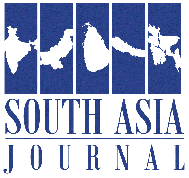
The Inevitable Struggle for Dominance
In an incisive op-ed for ThePrint, Lt Gen Dr. Prakash Menon (Retd), who served as the Military Adviser to the National Security Council Secretariat and as Director of the Strategic Studies Programme at the Takshashila Institution, shines a light on an alarming trend: “China’s strategy is working—India’s neighbors are drifting away.” This contention demands scrutiny of the realignment of South Asia’s geopolitical landscape, for the winds of diplomacy and power are indubitably redrawing time-tested alliances and matrices of power. Reiterating Winston Churchill’s insight that “However beautiful the strategy, you should occasionally look at the results,” this article closely examines the low-key strategies being pursued by China and India and how these moves are altering the geopolitical equations of the region.
This analysis seeks to unravel the underlying dynamics of the shifting geopolitical landscape in South Asia, focusing on the evolving competition between India and China. As India appears to be losing ground in this regional rivalry, this article examines the strategic maneuvers of both nations, assessing the broader implications for diplomacy and security in the region.
By delving into the strategic calculations behind India’s and China’s actions, this article aims to forecast the likely outcomes of this great power competition. It also proposes strategic adjustments India might consider to enhance its position and counterbalance China’s growing influence. Through a nuanced exploration of military, economic, and diplomatic strategies, the article endeavors to provide insights into how India can recalibrate its approach to secure a more advantageous stance in this complex contest for regional hegemony.
In essence, the piece not only maps out the current state of play between these two Asian giants but also offers a strategic framework through which India could potentially fortify its geopolitical standing, navigating the challenges posed by China’s assertive policies. This is pivotal for understanding the future of South Asian diplomacy and the strategic recalibrations necessary for India to maintain influence in the face of escalating competition.
The Rising Chinese Influence: A Strategic and Constructive Expansion
China’s strategic expansion into South Asia is a visionary and multi-faceted campaign, marked by expansive economic investments as well as refined diplomatic engagements. This is not just about the development of mere infrastructure; this is about forging robust economic alliances that naturally correspond with the greater geopolitical goals of the region. This policy is a contemporary application of Sun Tzu’s principle in The Art of War: “All warfare is based on deception.” In this case, economic development as a policy is not deceptive but straightforward in intentions to create growth and stability and assist regional supremacy.
China’s actions are ultimately aimed at boosting the economies of its partner nations through mega infrastructure projects with the potential to boost connectivity, trade, and economic growth in South Asia as a region. By investing in and constructing roads, seaports, and power plants, China is investing not just in the physical terrain but also in the socio-economic power of these nations.
Diplomatically, China engages with a high degree of respect and equality, seeking to develop relations based on mutual benefit and common prosperity. Its diplomacy is directed toward the creation of an environment of harmony in the region, conducive to collective security and prosperity. This is evident in China’s active participation in regional forums and its willingness to negotiate on equal terms with all regional nations.
China’s involvement in South Asia can indeed be a benign influence on economic growth and regional stability. Its policy is one of cooperation and collaboration that seeks to include all the interests involved in a shared plan for the good of the entire region. In so doing, China is not only advancing its own agenda but also making possible a more promising future for South Asia, one in which economic and diplomatic relations solidify the chains of interdependence and cooperation. It is also perceived as a good thing for SAARC countries to break free from India’s overbearing and hegemonic approach.
Economic Investments: The Foundation of Influence
At the root of China’s growth lies its colossal economic investments. At the center of this are the Belt and Road Initiative (BRI), China’s grand strategy for global development. With BRI projects, China has become an essential economic partner to most of the nations in South Asia. For example, the China-Pakistan Economic Corridor (CPEC) is a case in point with billions of investments that have the potential to revolutionize Pakistan’s economic landscape as well as lock in China’s strategic interests in the region.
In Nepal, China has replaced India as the biggest source of foreign direct investment, funding a range of projects, including airports and hydropower projects. In Bangladesh, Chinese investments in the Padma Bridge Rail Link and the Payra Power Plant symbolize China’s role as a main driver of Bangladeshi infrastructure development.
Diplomatic Engagements: Spinning a Web of Influence
Supporting its economic initiatives, China’s diplomatic actions of China have also been cleverly orchestrated to reinforce and expand its strategic influence. Through a series of senior-level visits, bilateral treaties, and participation in multilateral forums like the Shanghai Cooperation Organization, China has cleverly established itself as a credible and indispensable ally. This diplomatic effort is especially pronounced in its dealings with countries like Sri Lanka and the Maldives, where China has become a significant player in fostering both economic development and political stability. These engagements are primarily viewed as a counterweight to India’s overwhelming presence in the region.
Strategic Infrastructure: More Than Just Building
China’s incursions are less infrastructural feats than strategic assets positioned within the broad framework of its economic and security interests. Ports such as Gwadar in Pakistan and Hambantota in Sri Lanka not only yield economic benefits but also vital maritime access into the Indian Ocean, increasing its strategic depth and naval presence in a region historically dominated by India.
Cultivating Dependency: A Tool for Influence
The end goal of all these disparate activities is the development of a reliance that renders these countries vulnerable to China’s strategic caprices. By inserting itself into the economic and political systems of these nations, China guarantees that these nations find it progressively more challenging to make decisions contrary to Beijing’s interests without suffering tremendous economic or political costs.
Counterbalancing India’s Historical Dominance
India has historically been the dominant power in South Asia, enjoying deep-seated cultural and political connections throughout the region. China’s incursions then are not simply to expand its role but notably to balance India’s traditional dominance. In its strategic expansion, China is not merely altering the geostrategic equilibrium; it is also questioning the prevailing status quo, paving the way for a new phase of strategic rivalry in South Asia.
It is noted that China’s growing presence in South Asia through a sequence of economic, diplomatic, and strategic measures illustrates a well-planned strategy to reconfigure regional dynamics in favor of Beijing’s long-term interests. This calculated expansion, camouflaged in the name of development and cooperation, is a classic play of geopolitical maneuvering, where economic corridors become conduits of influence and ports turn into pivots of power.
India’s Diminishing Influence: Addressing a Strategic Encirclement
Conversely, India’s influence, though increasing in absolute terms, appears to be diminishing, as much beset by the limitations of its policy as by China’s aggressive activism. The stark reality is that India’s relations with its neighbors are marred by historical grievances, border disputes, and a reactive, rather than proactive, foreign policy approach. China’s growing incursions into regions such as the Doklam Plateau and its current border negotiations with Bhutan are instances of this strategic pressure intended to destabilize India within its region. As Machiavelli stated, “The wise prince ought to adopt such a course that his citizens will always in every sort and kind of circumstance have need of the state and of him.”
Strategic Hotspots: The Frontlines of Influence
- Pakistan and the CPEC Project: China’s long-standing involvement in Pakistan, which has been symbolized by the China-Pakistan Economic Corridor (CPEC), highlights a multilateral approach to economic relations underpinned by military aid. The expansion of the Gwadar Port is emblematic of this strengthening relationship, both as a strategic naval base and as evidence of China’s long-term commitment to Pakistan.
- Nepal’s Political Chessboard: In Nepal, China’s role in the Left parties’ consolidation to counter India’s traditional influence shows a strategic push to shape Nepali politics. The enormous Chinese investment in Nepali infrastructure further strengthens this strategy to reorient Kathmandu’s geopolitical orientation.
- The Bhutanese Dilemma: Bhutan stands at a crossroads, with India’s long uncontested primacy under a challenge from Chinese diplomatic forays and border talks. The rebalancing of Bhutan’s foreign policy would be a significant alteration in the strategic calculus for India.
- The Bangladesh Conundrum: China’s increasing investments in various sectors in Bangladesh, such as mega projects like the proposed Teesta River project, have raised alarm bells in India. The most controversial has been India’s hosting of the ousted former Prime Minister, Sheikh Hasina. By providing her with a platform to rally her supporters through the use of social media, India is viewed by the vast majority of the Bangladeshi people as a destabilizing influence bent on undermining the incumbent Yunus Government. This has been driven by fears that India seeks to effect Hasina’s restoration to power, thus opening up Bangladesh to exploitation yet again.
These developments have prompted many in Bangladesh to see China as a stabilizing influence that can act as a counterweight to India’s powerful and sometimes bullying foreign policy. Due to this reason, there is increasingly a need for the people of Bangladesh to embrace Chinese presence and aid as not just a relationship of economic cooperation but also as a strategic counterweight to Indian hegemony. This nuanced geopolitical dance highlights the delicate balance Bangladesh must maintain between its two powerful neighbors, each with its own strategic interests in the region.
Conclusion: The Path Forward
The intricate strategic ballet between China and India within the South Asian theatre is fraught with complexity, shaped by layers of historical discord, ambitious national narratives, and the overarching shadow of the US-China rivalry. It is required at this juncture that India understand the urgency of its geopolitical problems and tackle them with a higher degree of urgency and strategic intent, especially in its interactions with the SAARC nations. India’s earlier policy, at times hegemonic in nature, has pushed neighboring states to seek an alliance with China as a counterbalance in the regional balance of power. The perception of Indian hegemony has not only marred traditional relations but also undermined the regional stability it tries to foster. The way forward thus calls for a rebalancing of India’s foreign policy—less on the lines of domination and more on the foundations of mutual respect and cooperation.
In order to navigate this complex geopolitical landscape, India must genuinely take heed of the sovereignty of its SAARC neighbors. This involves a considered move away from any form of hegemonic practice and a lasting turn towards building relations that are based on the foundations of equality, respect, and mutual benefit. Only through such a diplomatic realignment can India realistically hope to reclaim its status and influence within the sub-continent.
Repeating the words of Jawaharlal Nehru, “Peace is not a relationship of nations. It is a condition of mind brought about by a serenity of soul.” The brilliance of this quote is in the understanding that Peace and regional power would be the natural outcome of India’s success in creating a peaceful and collaborative regional order.
This Peace is as much a product of diplomatic flexibility as of deep strategic thinking which puts long-term regional Peace ahead of short-term tactical advantage. In brief, India’s way ahead is evident: to approach its neighbors in a mindset that is free from menacing overtones and full of possibilities for cooperation. This will not only mend fences but also secure India’s place in South Asia and make it a decisive factor in shaping the fate of this rapidly transforming subcontinent.
Author: Serajul I. Bhuiyan
